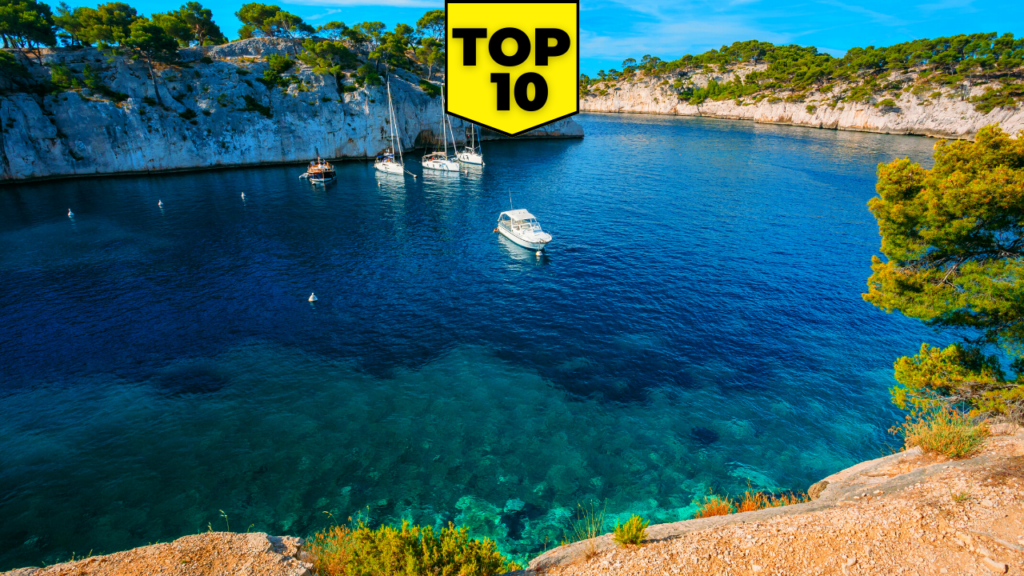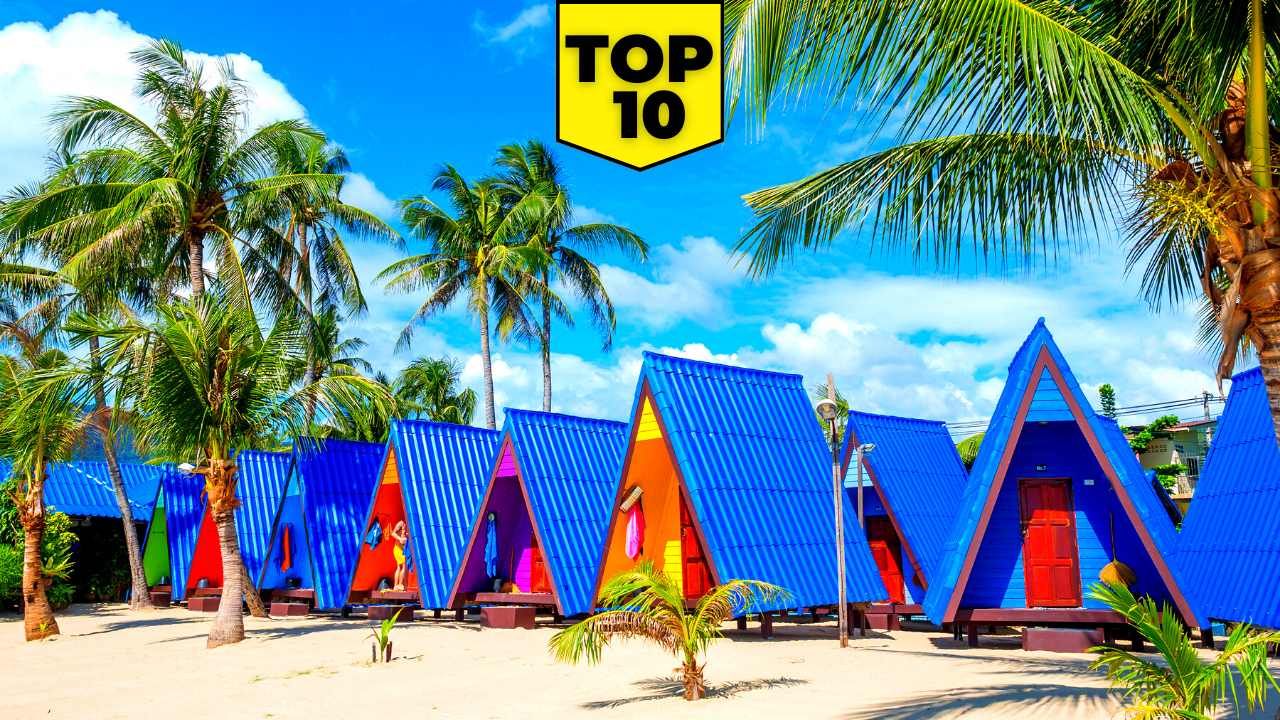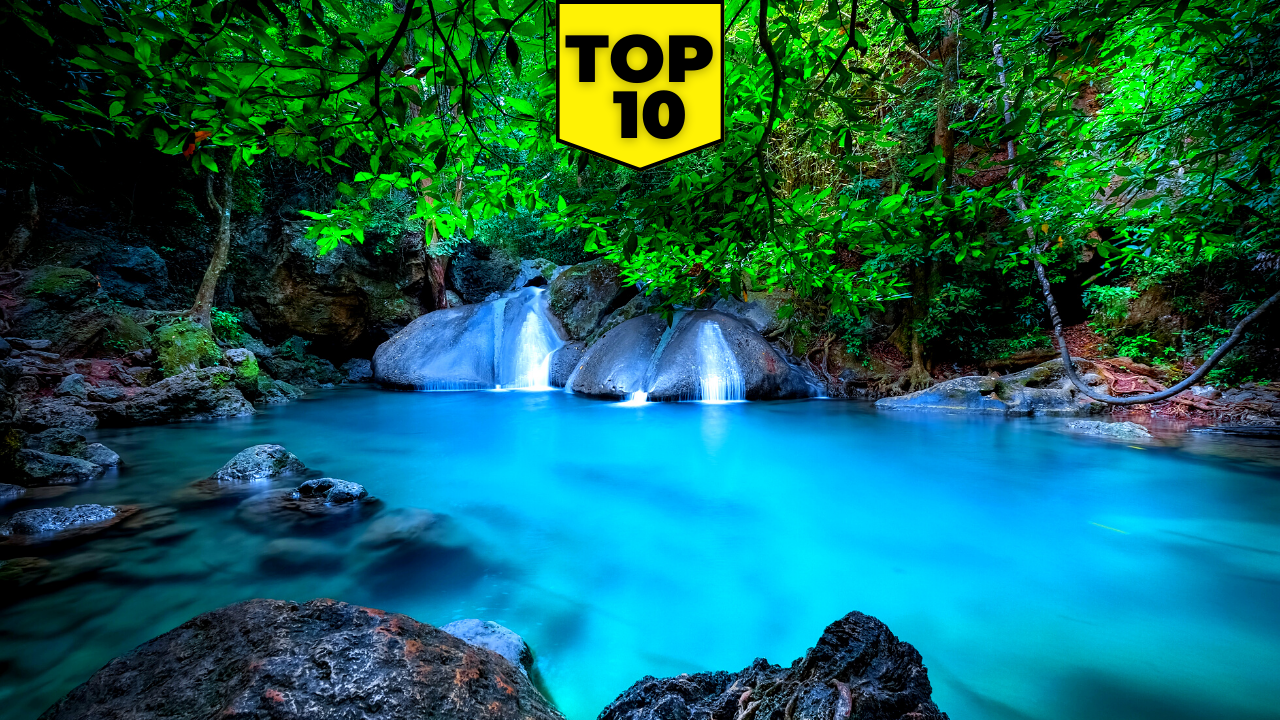
The region of Parc National des Calanques is incredibly beautiful, offers a variety of landscapes, and has a distinctive cultural heritage.
It is the only national park in Europe to include both land and water, and it is situated in the South of France along a 20-kilometer stretch of coastline between Marseille and Cassis.
Perhaps you’ve heard of Marseille or the Calanques de Cassis, but you’re unsure of how to begin discovering this beautiful region for yourself.
Let’s talk about the top 10 things to do in Calanques National Park France.
Table of contents
10. Camping Du Garlaban
The Camping du Garlaban site, located just outside of Marseille, is the perfect location if you love camping. Camping du Garlaban is the ideal symbiosis with the surrounding nature. It is located in the middle of a 7-hectare pine grove, directly below the Garlaban mountain.
By staying in one of their fully furnished lodges or opulent wood cabins, you may rediscover the joys of camping and find a unique place to stay.
The facility, which is tucked away in a pine forest, lets you set up your tent, leave your RV there, or book a room in one of the many quaint cabins or themed lodges. Some include kitchens and baths. Pets are permitted at the campsite.
The design of the campsite also encourages us to find comfortable and unusual accommodations while being perfectly integrated with the nature that welcomes us.
They also dedicate a space to Aubagne farmers’ market every Saturday and Sunday morning, to promote their products which come from a committed approach.
9. Les Goudes
Les Goudes is one of those places that almost looks too wonderful to be true, like entering into a picture. It’s not a wonder why it’s sometimes called “The End of the World,” because that’s what it feels like as you leave the bustling city of Marseille behind and drive along the sublime coast to Cap Croisette.
The quiet fishing community outside of Marseille appears like a completely different place from the busy city. However, both locals and southern visitors find it appealing due to its close proximity to the second-largest city in France.
Due to its advantageous location within the Calanques National Park, Les Goudes has managed to avoid the overdevelopment that plagues much of the coast.
It is still entirely true to itself, like a small fragment of time that has been expertly kept in a location where you can still come across run-down seaside houses and elderly guys who are content to chat with a stranger about their garden.
But that doesn’t mean the village is dozing off. On the weekends, Les Goudes is packed with hip young Marseillais, indicating that it is a well-liked location on a warm day.
8. Calanques De Podestat
Podestat is a small cove, the fourth cove of the Marseilleveyre massif from Marseille. Accessible in about 2 hours of walking from Callelongue, it is also the last cove before approaching the col de Sormiou.
Surrounded by the minor creeks of Queyrons and Esau, it offers a fairly flat walking path along the sea. However, be sure to bring good hiking boots, as some parts can be steep!
A large part of the cove is occupied by more or less coarse sand surrounded to the east and west by a rocky edge formed by large blocks, with a large cave to the southwest.
The cove ends with a pebble beach that extends underwater. There is no Posidonia meadow, but the presence of roots and dead matte under a few centimeters of the sediment shows that this ecosystem was formally established in this cove.
Its disappearance is probably linked to the proximity of the Cortiou outfall, which has been discharging wastewater from the Marseille conurbation since 1896. The cove is dominated by the Têtes de Malvallon and the plateau of the dead man.
7. Calanque De Sormiu
The Calanque de Sormiou is one of Marseille’s most well-known creeks. It is situated in Marseille’s 9th district and offers a stunning setting with a sizable sandy beach! It is one of the few expansive beaches in the Calanques, measuring 60 meters long and composed of both sand and pebbles.
Families and sports enthusiasts alike are welcomed. In contrast to other creeks and tiny coves known to the Marseillais as “plagettes,” it is unique. Because of an underground freshwater spring that feeds into it, the Calanques’ crystal-clear waters are often cooler than those of the city’s expansive sand beaches.
With a variety of sporting events, the UCPA center at the end of the beach helps keep it lively such as kayaks, hiking, and climbing. The Calanque de Sormiou’s modest marina is located on the other side of the beach.
6. Calanques de Morgiou
Small typical fishing port still in activity, the Calanque de Morgiou is located between the Calanques de Sormiou and Sugiton, in the Calanques National Park. It is narrow and deep and consists of a fishing port, cabins, a restaurant bar, and a bowling green!
Well known to fishermen, who go to spend their Saturday evenings there, summer and winter, the Calanque de Morgiou is also a delight for tourists.
They do not come here to look for the fish to make the bouillabaisse but to take advantage of this little corner of paradise that seems out of time.
This is the story of all the creeks, little confidential corners known only to fishermen who have gradually become international attractions.
It is also a dream spot for hikers. Garrigue, steep paths, and then finally the reward, a small secret cove, turquoise water, and the famous song of the cicadas. In short, a sample of the Provençal sweetness of life.
5. Port Pin
Contrary to popular belief, the Calanque de Port-Pin is located in Marseille rather than Cassis. It is a portion of the Calanques National Park and is more accurately located in the Vaufrèges neighborhood.
It is well situated between the Port-Miou and En-Vau creeks, and you will quickly see why it is so well-liked by travelers. A white sand and pebble beach, pure water that reflects the sky’s blue, and the forest’s green, brilliant white rock that is sheltered by pine trees—almost a scene from a fantasy world!
It is deep and narrow, winding through the rock, and the waters are chilly as they are throughout the Calanques. One of the few creeks in the massif with trees is called Port-Pin; bathers should get there early in the summer to spread out their towels because it is highly popular!
Be careful; numerous roots demand sturdy footwear, and several rocks have a patina from the site’s frequent use. The site is accessible via the former Port-Miou quarry and the trail that descends to Port-Pin after a brief rise.
4. Calanques D’en Vau
The Calanques National Park encompasses an immense natural area of land, sea, and semi-urban areas between Marseille and Cassis in the South of France.
It’s beloved by locals and visitors alike, who frequent the park’s trails, hiking through native trees and shrubs to secluded coves and incredible elevated viewpoints.
Perhaps the most loved Calanque is that of Calanque d’En Vau. Surrounded by dramatic cliffs, this inlet is one of the deepest, and most sheltered in the park, making it perfect for swimming, kayaking, and snorkeling.
Its beauty is unparalleled, and it’s absolutely worth the effort required to reach it. The Calanques are a series of steep-walled inlets that punctuate the craggy coastline, each cutting unique shapes into the limestone cliffs, and often culminating in picture-perfect beaches.
#3 Calanques De Marseilleveryre
If you follow the coast, Marseilleveyre is the second of Marseille’s Calanques. You may reach a little piece of paradise along this coastal way, a genuine balcony over the sea, in about 45 minutes from the port of Callelongue by walking along the GR 98 path.
Due to its proximity to the town and ease of access, the pebble and sandy beach is nonetheless highly crowded despite being larger than the beaches of the nearby Calanques.
In this untamed cove at the entrance to the second-largest city in France, a dozen huts without running water or electricity remain extraordinary jewels. What a difference! A very simple existence, far from urban comforts.
The Calanque de Marseilleveyre is all of these things at once: sun-drenched, frequently washed by the Mistral wind, populated by tourists, or uninhabited! You have a stunning view of the Riou archipelago and, farther away, Cap Canaille from the Calanque.
Taking the big Malvallon makes it simple to go back to civilization.
2. Calanques De Sugiton
The trip to Calanque de Sugiton is one of many that you may take in the Calanques National Park, which is located south of Marseille. It truly is a wonderland! Its waters are fresh and crystal clear.
It is a little cove with a varied relief, shaded, with sand, pebbles, and boulders. Because of its resemblance to a battleship, the enormous, elongated rock in front of it is known as “The Torpedo Boat.”
Going uphill and downhill respectively takes hardly any longer than an hour. The path is typical for the first half-hour until you reach the Sugiton Pass, where it becomes a fake flat.
To the right of the pass, you can go to the Belvedere, which provides a surreal view of the Morgiou Calanque. Sugiton has stunning climbing routes as well; novices frequently travel great distances to test their skills on the dihedrals and overhangs in a single or multiple pitches.
A bit further on, the Grande Candelle rises imposingly, and the view from its walls is breathtaking.
1. Calanques De Cassis
The Calanques De Cassis, which are cliffs, is a natural beauty located halfway between Marseille and Cassis. This unique and breathtaking landscape is unquestionably a must-see when visiting Calanques National Park!
Little fjords with turquoise water, pebble, fine sand beaches, and other scenic elements can be found in this biodiverse jewel. It’s an excellent location for practicing new water sports while snorkeling, kayaking, or sunbathing.
Regardless of whether you want to go on a trek or just unwind and take in the view, this magnificent setting will meet all of your demands. There are some places that are more accessible than others that have Calanques that are family-friendly.
Since it’s also a point of entry to the park, hikers will admire other Calanques that are more challenging to reach and find that their efforts are well worth it.
You must not miss this special location while visiting the National Park!



